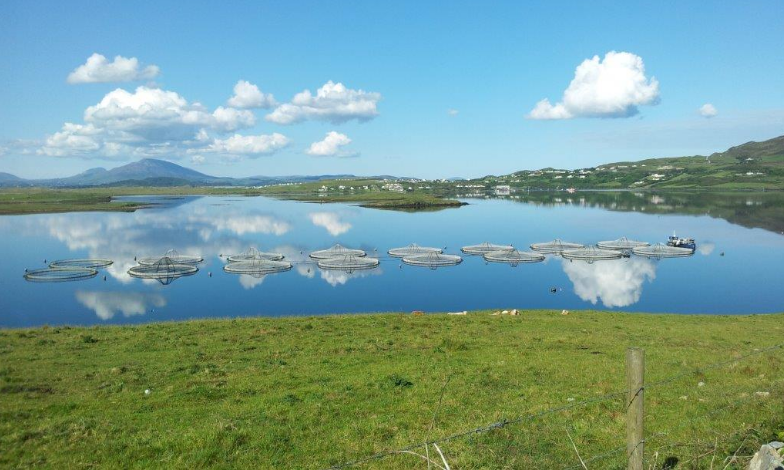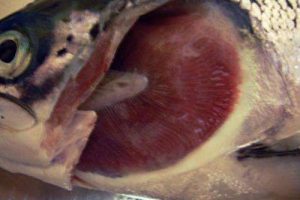Home » Environmental Priorities » Fisheries and Aquaculture » Aquaculture »
Spread of disease is another issue that affects the aquaculture industry. Pathogens can be introduced from natural sources or through the introduction of new individuals to farm stocks. These animals have also been known to escape, spreading disease to wild populations. When animals are confined to a relatively small space, it is common for diseases and parasites to proliferate and spread rapidly. In Irish salmon farms for example, outbreaks of Amoebic Gill Disease have become more and more frequent in recent years (Palmer et al., 1997).
Amoebic gill disease
Amoebic Gill Disease is caused by Neoparamoeba perurans, and attacks the gills of farm-raised salmonoid fish, eventually drowning them. It has led to mass mortality across the industry (Ruane and Jones, 2013). Most notably its effects have been recorded in Tazmania, Australia, and Washington, USA, however it has also been recorded in Chile, Norway, Scotland and Ireland.

Amoebic Gill Disease is identified in commercial farms by utilising a ‘gross gill score’ field evaluation methodology which established the presence and severity of the disease in farmed fish stocks. Amoebic Gill Disease appears in the early stages of growth at sea subsequent to being moved from freshwater hatcheries to open net sea cages, with symptoms presenting as:
- Mucoid patches
- Hyper-plastic lesions
- Flared operculae and gasping
- Fish may also appear higher in water column
(Fisheries Ireland, Press Release, 9 Jan 2017; Norwegian School of Veterinary Science Article)

Treatment of Amoebic Gill Disease
Once identified, infected fish stocks can be treated with 2-3 hour freshwater bath. Access to freshwater resources may therefore be a key consideration in the planning and development of farmed fishing facilities. Hydrogen peroxide has also been effective in treating symptoms and is a common method used in Ireland (Adams et al., 2012).
Sea Lice
Additional environmental impacts have been observed due to fish farming facilities in the form of sea lice infestations on fish stocks. Current research conducted by Inland Fisheries Ireland and Argyll Fisheries Trust (Scotland) suggest that trout caught in close proximity to farmed salmon stock have a higher incidence of sea lice than those caught elsewhere. These results were based on an assessment of lice infestation of 20,000 trout over a 25 year period across 94 river and lake systems in both Ireland and Scotland. Increased levels of sea lice lead to:
- Increased mortality
- Reduced body condition
- Changed migratory behavior

Influence of pathogen spread is also seen in the culture of the Pacific oyster in Co. Cork. This species has shown an increase in production (7%) since 2014, but has the potential to crash due to the spread of disease, which has been shown to give rise to mass mortalities across the UK, France, Spain and Ireland (EFSA, 2009). Financial losses due to these mortalities can have profound effects on the dozens of aquaculture employees in Co. Cork alone, not least the value of the product to the Irish economy as a whole.

